Google Products: The Search Engine’s Portfolio
Everyone uses Google. From searching for cinema listings in your local area to setting up personal blogs, we’ve all experienced their products and services one way or another. Google is so big, its homepage doodle constantly makes the news. This page aims to offer a review of Google’s products and acquisitions, organised chronologically over more than a decade. It’s all here, from blogging, online marketing, and video hosting, to mobile technology and geospatial apps. Let’s get started!
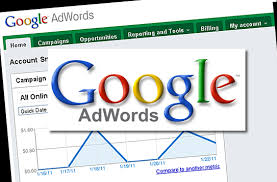 October 2000 – Google AdWords was launched with over 300 users. The pay-per-click advertising service was piloted throughout the previous months, and the first company to ever create an advert this way was a business that sold live mail order lobsters. Before AdWords, Google used Premium Sponsorships to set up adverts, but there was no way for business owners to manage their own online marketing campaigns. AdWords was in a way revolutionary, although it did spend some time in a legal battle with Idealab over the concept, a conflict which was eventually resolved out of court.
October 2000 – Google AdWords was launched with over 300 users. The pay-per-click advertising service was piloted throughout the previous months, and the first company to ever create an advert this way was a business that sold live mail order lobsters. Before AdWords, Google used Premium Sponsorships to set up adverts, but there was no way for business owners to manage their own online marketing campaigns. AdWords was in a way revolutionary, although it did spend some time in a legal battle with Idealab over the concept, a conflict which was eventually resolved out of court.
Since its inception, the way people use AdWords has changed as the complexity of the service grew. Quite a lot of users now hire someone to manage their accounts. In 2013, AdWords launched a service which aimed to help advertisers manage their campaigns over the ever growing number of platforms people use to access the internet nowadays. This move saw Adwords doing most of the conversion work and lifting the burden from advertisers, who no longer had to edit each campaign. The move has received some criticism from users.
December 2000 – The first version of Google Toolbar was made available to internet users. It allowed easy access to the search engine function as well as other services such as PageRank. To this date, Google Toolbar is only available to Internet Explorer and Firefox users.
February 2001 – Google acquired Deja News, a service dating from 1995 which archived messages posted to Usenet discussion groups and allowed users to search through them with great efficiency. It went through a number of changes before being acquired by Google, turning into private discussion forums for businesses and eventually into a shopping comparison website. After experiencing financial trouble, it sold its shopping services to eBay. After Google bought Deja News, it transferred all its assets onto their servers, which meant the Usenet archive was now available again through Google Groups. Usenet was discontinued in 2005, and all its users were recommended Google Groups as an alternative. A new version was released in 2013.
July 2001 – Google launched Google Images, a search engine that allows users to search for images online. From 2011, the service allows reverse image search, where users can search for more information and for the original source of an image they found online.
September 2002 – Google News is made available to the public allowing users access to 4,000 news sources. It now has over 50,000 news providers.
December 2002 – Google Shopping was launched, then known as Froogle. Google Shopping is a price comparison service that used Google’s web crawlers to index products, although it now operates primarily based on paid submissions.
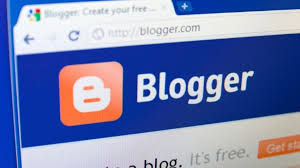 February 2003 – Google acquired Pyra Labs, who launched web publishing platform Blogger back in 1999. At the time of its launch, Blogger was one of the few tools enabling internet users to publish their own blogs, and it was widely credited with making blogging the popular activity it is today. At the time of acquisition, Blogger had a few premium features that Pyra Labs would charge for, but Google made these freely available to users.
February 2003 – Google acquired Pyra Labs, who launched web publishing platform Blogger back in 1999. At the time of its launch, Blogger was one of the few tools enabling internet users to publish their own blogs, and it was widely credited with making blogging the popular activity it is today. At the time of acquisition, Blogger had a few premium features that Pyra Labs would charge for, but Google made these freely available to users.
Blogger went through a major redesign in 2004, where new features were added including new design templates, comments, an archive for posts and the ability to publish by email. The next update to the service came in 2006, where all blogs associated with Google accounts were moved to Google’s own servers. At present, Blogger’s popularity means it’s available in multiple languages and allows users to have country specific web addresses.
March 2003 – Google launched AdSense, an advertising service aimed at content publishers. It became open to users a few months later, and allowed webmasters to display adverts on their website and earn money on a pay per click or per impression basis. Adverts were chosen based on the content of the webpage they were to be displayed on, which caused some complaints regarding its efficiency. Some claimed AdSense was not as productive as AdWords, because people who were simply reading about a subject were less likely to make a related purchase than those individuals who were actively searching about it on the internet. In 2005, Google launched an AdSense service for RSS feeds, which remained in a beta stage until 2008. AdSense has been involved in some controversies as certain webmasters tried to abuse the system by creating web pages with randomly generated text simply to lure people off search engines and onto their website. Combined with numerous adverts, this constant high traffic would generate income. Google has taken a tough approach to dealing with such individuals, and accounts are now disabled if found to be abusive.
January 2004 – Google launched social networking site Orkut, named after an employee. The website is very popular in Brazil and India, and the managing team moved headquarters from the United States to Brazil in 2008.
April 2004 – Gmail was launched as a beta version. At the time of its release, the email service was only available to those who received an invitation, but it was opened to the public three years later. It was taken out of beta in 2009.
July 2004 – Picasa was acquired by Google from its original authors and offered for free to the public. Picasa is an image viewing software created by a company called Lifescape in 2002 that allows its users to organise and edit their images. Its name is inspired by painter Pablo Picasso and the phrase “mi casa” which means “my home” in Spanish. Picasa’s features for organising photos are comprehensive, and users have access to imports, facial recognition, tags, and collections. It also offers a live search function to find a specific photo in a gallery. Google also launched a photo sharing website based on Picasa called Picasa Web Albums. Users with Google Accounts could store up to 1GB of large images for free through the website, and Google+ users had unlimited allowances. In 2013, Google integrated Picasa Web Albums with Google+ without informing its users in advance, and anyone who wishes to access their albums must now do so through the social network.
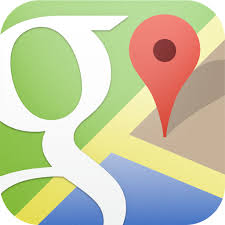 October 2004 – Google acquired Australian company Where 2 Technologies after it pitched a web service which later came to be known as Google Maps. It was announced in 2005 on Google’s blog, and while its availability was initially restricted to users of Internet Explorer and Mozilla Firefox, it was soon optimised for other browsers. It began showing road maps in 2006, and at first covered a limited number of countries such as the United States, the United Kingdom, Japan and Canada. In 2006, the first moves to integrate business services were made and Google Local was the first service to be merged with Maps. A few months later, business listings associated with Google Maps began being featured on the main search results page. In 2007, Google Maps started allowing reviews to be posted directly to the web app. In 2013, Google Maps updated to include coverage of North Korea. One of the most exciting updates to the application is Street View, which was first introduced in 2009 covering the United Kingdom and the Netherlands. The feature has been expanding ever since, and includes fifty countries at present.
October 2004 – Google acquired Australian company Where 2 Technologies after it pitched a web service which later came to be known as Google Maps. It was announced in 2005 on Google’s blog, and while its availability was initially restricted to users of Internet Explorer and Mozilla Firefox, it was soon optimised for other browsers. It began showing road maps in 2006, and at first covered a limited number of countries such as the United States, the United Kingdom, Japan and Canada. In 2006, the first moves to integrate business services were made and Google Local was the first service to be merged with Maps. A few months later, business listings associated with Google Maps began being featured on the main search results page. In 2007, Google Maps started allowing reviews to be posted directly to the web app. In 2013, Google Maps updated to include coverage of North Korea. One of the most exciting updates to the application is Street View, which was first introduced in 2009 covering the United Kingdom and the Netherlands. The feature has been expanding ever since, and includes fifty countries at present.
October 2004 – Google launched Google Books, a service that makes it possible to search the content of books Google has added to their digital library. The project currently includes around 30 million scanned items.
November 2004 – Google Scholar was opened to the public in beta version. The search engine indexes scholarly literature and allows users to look for specific journal articles and import bibliographical references, a feature which was added in the face of competition from Windows Live Academic Search in 2006. In 2007, it began hosting its own digitised journal articles. Google Scholar was made available through the toolbar on Google’s main page, although it was removed in 2011, making it harder for people to find and virtually inaccessible to people who didn’t already know it existed. Google began customising Google Scholar in 2012, allowing users with an associated academic email address to set up their own pages and import their own citations. A personalised library was added in November 2013, and users can now save their favourite search results and organise them into relevant categories with the use of tags.
January 2005 – Video search service Google Videos was launched; the service also operated as a video sharing site for a period of time. It was shut down in 2012 and all content it was hosting at the time was moved to YouTube.
April 2005 – Google acquired Urchin Software Corp., a company whose expertise would later be used to build Google Analytics, a service that allows users to access in depth statistics about the traffic their website receives.
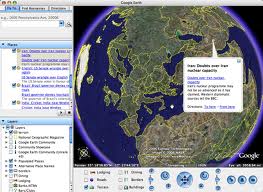 June 2005 – Google Earth 3.0 was released after the company acquired Keyhole, Inc in 2004 and took over its geographical data visualisation software. Google Earth acts as a virtual globe and map, and allows its users to explore corners of the world that would not normally be available to them. It was accessible through three different types of license, including a free one and a commercial version. The third one, Google Earth plus, was eventually discontinued. It was released as a mobile app for iPhones in 2008, and can now be accessed on Android devices as well. Overall, it had received over a billion downloads by 2011.
June 2005 – Google Earth 3.0 was released after the company acquired Keyhole, Inc in 2004 and took over its geographical data visualisation software. Google Earth acts as a virtual globe and map, and allows its users to explore corners of the world that would not normally be available to them. It was accessible through three different types of license, including a free one and a commercial version. The third one, Google Earth plus, was eventually discontinued. It was released as a mobile app for iPhones in 2008, and can now be accessed on Android devices as well. Overall, it had received over a billion downloads by 2011.
Google Earth includes a number of exciting features, such as a flight simulator, historical imagery, street view, and a water and ocean option which allows users to zoom below the surface and explore the depths of the sea. Related products include Google Mars, available for research, and Google Moon which was launched to mark the 40th anniversary of the Apollo 11 mission in 2009.
August 2005 – Android, Inc was bought by Google after its founders Andy Rubin, Rich Miner, Nick Sears and Chris White ran out of money. They started the company to create a different type of mobile device, smarter than those already available. Google brought together a group of technology companies including Sony and Samsung to form the Open Handset Alliance. Android was revealed as the first product of the Alliance, a mobile operating system that rivaled Windows Phone and Symbian. In 2008, HTC Dream was revealed as the first mobile phone to run the system. Google joined the mobile device market in 2010 when it released its Nexus series which includes mobile phones and tablet computers.
March 2006 – Google Finance was launched featuring news about the latest developments in notable companies, including stock information and price charts.
April 2006 – Google launches Google Translate, an online translation service that started out translating between English and Arabic and now includes over 70 different languages.
April 2006 – Google Calendar also saw the light of day during this month. Calendar is a web application that helps Google Account holders manage their time. The service is integrated with Gmail, iGoogle, and Google Desktop.
May 2006 – Google Trends was launched, a tool which allows users to see how popular certain keywords are based on time, the area they are searched from and the language of the searches.
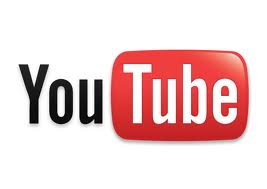 October 2006 – Google acquired YouTube for around $1.65 billion in stock. The video sharing website was launched the previous year by three former PayPal employees, and operated as a venture capital funded start-up. The website was formally launched in November 2005 and it was already receiving 100 million video views per day within a year. In 2008, YouTube finalised an agreement with Lions Gate Entertainment, MGM and CBS that allowed US viewers to watch films or TV shows on the website. This was rolled out to the viewers from the UK a year later, and aimed to compete with other websites providing a similar service such as Hulu. In 2010, YouTube started streaming live content including sport event for its users. Whilst most content remains free to access on the site, this year users have seen YouTube pilot a scheme that allows some content providers such as television channels to charge users who wish to access their videos.
October 2006 – Google acquired YouTube for around $1.65 billion in stock. The video sharing website was launched the previous year by three former PayPal employees, and operated as a venture capital funded start-up. The website was formally launched in November 2005 and it was already receiving 100 million video views per day within a year. In 2008, YouTube finalised an agreement with Lions Gate Entertainment, MGM and CBS that allowed US viewers to watch films or TV shows on the website. This was rolled out to the viewers from the UK a year later, and aimed to compete with other websites providing a similar service such as Hulu. In 2010, YouTube started streaming live content including sport event for its users. Whilst most content remains free to access on the site, this year users have seen YouTube pilot a scheme that allows some content providers such as television channels to charge users who wish to access their videos.
December 2006 – Google Patents became available, a search engine which allows internet users to search for patents and patent applications in the United States.
February 2007 – Google Docs was launched as a beta version for Google Apps users. At the moment of its launch, it was built as a combination of two other products, Writely and Google Spreadsheets. Writely was a product of software company Upstartle, which was acquired by Google in March 2006. Google Docs was taken out of beta in 2009, and a year later it allowed up to 1GB of free storage, with the possibility to pay for any additional space if needed. At the same time, Google acquired DocVerse, a document collaboration company, and integrated their knowledge with Google Docs. Users could now work together on online documents, which made life easier for a lot of people with partners overseas or working in big teams.
June 2007 – Google acquired FeedBurner, allegedly paying $100 million for it. FeedBurner was launched in 2004 and offered web traffic management services to publishers. Its main features were a traffic analysis option and an advertising system which caused much debate about whether RSS feeds can and should incorporate advertising. After the acquisition, two of FeedBurner’s Pro services were made freely available to the public. The idea to introduce advertising in RSS feeds, which in 2012 was managed via AdSense, was eventually shut down. Google does not provide any support for Feedburner at the moment and reporting technical problems is left to users who have organised a group for this purpose.
March 2008 – Google acquired DoubleClick, a service that uploads advertisements online on behalf of marketers or companies, and then monitors their performance.
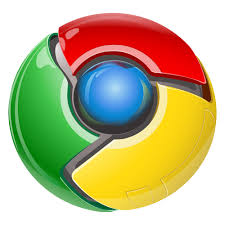 September 2008 – Google Chrome was released after years of debating whether Google should launch an internet browser at all. A group of developers Google hired from Mozilla created Chrome, a browser so well put together that it changed the mind of Eric Schmidt, who initially didn’t want the company to get involved in messy browser wars. The first version of Chrome would only work on Windows, but an all inclusive update was made available in 2010. Chrome is Google’s first and only browser, at least for the moment, and the majority of its code can be accessed through an open source project called Chromium. Google launched a web store the same year, where Chrome users can download apps and extensions to use with their browsers. Users can also download themes to customise their version of Chrome and personalise their internet browsing experience.
September 2008 – Google Chrome was released after years of debating whether Google should launch an internet browser at all. A group of developers Google hired from Mozilla created Chrome, a browser so well put together that it changed the mind of Eric Schmidt, who initially didn’t want the company to get involved in messy browser wars. The first version of Chrome would only work on Windows, but an all inclusive update was made available in 2010. Chrome is Google’s first and only browser, at least for the moment, and the majority of its code can be accessed through an open source project called Chromium. Google launched a web store the same year, where Chrome users can download apps and extensions to use with their browsers. Users can also download themes to customise their version of Chrome and personalise their internet browsing experience.
October 2008 – Android Market was released, an online store for mobile applications that would later become known as Google Play. Play now allows users to access music and video entertainment, as well as apps, news and games.
March 2009 – Google launched telecommunications service Google Voice, which allows its users to make phone calls to domestic and international numbers through Gmail.
June 2009 – Google launched Google Fusion Tables, a database management tool. It allows users to store data in multiple tables and to visualise their data using simple methods such as pie charts but also some more complex geographical visualisation tools.
January 2010 – Google launched their first Android smartphone, Google Nexus One. Some of its main features included voice guided driving directions, and voice-to-text conversion services. Google continued launching devices under the Nexus branding, including a tablet computer, Nexus 10, revealed to the public at the end of 2012.
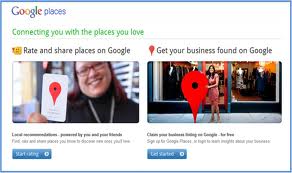 April 2010 – Google Places was launched as an overhaul of Place Pages and to better incorporate the Local Business Centre into the service. Place Pages was opened in the previous year as a tool made available through Google Maps. It helped users find businesses in their local area, as well as popular institutions such as museums. Four million business owners were managing their own page through Place Pages before the change, but the total number of pages listed was around 50 million. With Google Places, the company aimed to simplify the way businesses managed their own pages, which was previously done through the Local Business Centre. The launch brought entrepreneurs an array of extra benefits, such as more advertising options, a better way to advertise service areas, and even free photo shoots.
April 2010 – Google Places was launched as an overhaul of Place Pages and to better incorporate the Local Business Centre into the service. Place Pages was opened in the previous year as a tool made available through Google Maps. It helped users find businesses in their local area, as well as popular institutions such as museums. Four million business owners were managing their own page through Place Pages before the change, but the total number of pages listed was around 50 million. With Google Places, the company aimed to simplify the way businesses managed their own pages, which was previously done through the Local Business Centre. The launch brought entrepreneurs an array of extra benefits, such as more advertising options, a better way to advertise service areas, and even free photo shoots.
October 2010 – Google launches a smart TV platform called Google TV. Smart TV aims to establish a better connection between television sets and the internet, and Google TV incorporated many of Google’s existing services at its launch.
May 2011 – Google announced Chromebook, a laptop that is meant to be used whilst being connected to the internet, as it relies on cloud storage and online applications to function.
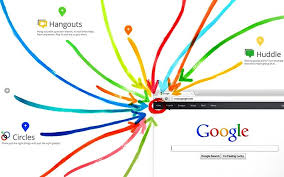 June 2011 – Google launched their own social media network Google+ on an invitation-only basis, creating a frenzy among technology enthusiasts to see who can get in first. This huge demand caused Google to suspend the invitations for new accounts, only allowing 150 invitations for each existing user who wished to bring their friends to the website. It was opened to the public in September 2011. Google+ is now the second largest social network after Facebook, and over half a million people interact with it each month whether it’s through their own profiles on the platform or through +1 buttons or email.
June 2011 – Google launched their own social media network Google+ on an invitation-only basis, creating a frenzy among technology enthusiasts to see who can get in first. This huge demand caused Google to suspend the invitations for new accounts, only allowing 150 invitations for each existing user who wished to bring their friends to the website. It was opened to the public in September 2011. Google+ is now the second largest social network after Facebook, and over half a million people interact with it each month whether it’s through their own profiles on the platform or through +1 buttons or email.
Its two most successful sides are the Google Hangouts feature and the photography part of the social network. There are around 1.5 billion photos uploaded to the website each week, while Hangout allows up to ten people to hold a conference call through the social network. An extra feature called Hangouts-on-Air allows users to broadcast their live hangout in the form of a webcast. This opportunity often appeals to celebrities, and the first ever publicly broadcast Hangout was by will.i.am of the Black Eyed Peas.
August 2011 – Google announced an agreement with Motorola Mobility whereby the internet giant would acquire the telecommunications company for around $12.5 billion. Motorola Mobility used to be Motorola’s mobile phone division, and became independent only seven months before Google snapped it up. The acquisition was described by Google as a move which made sense, as both companies were supporters of Android and their merger would drive progress and thus competition in the mobile technology field. The idea that Google only bought the mobile communications company to add to its patent portfolio was also floated around and had some basis in figures, as Motorola Mobility held over 17,000 patents with many more pending.
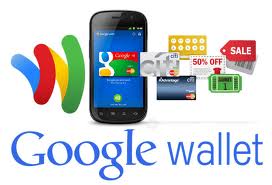 September 2011 – Google Wallet was released in the United States. Having previously been demonstrated a few months back, the mobile application was made available only on devices purchased within the United States. It allowed its users to store debit card and credit card information on their phones and pay with their devices at any card terminals which supported the technology. On top of this, Google Wallet users could also access gift cards or any loyalty cards they may hold. The service was integrated with Gmail in May 2013, and its users can now send money as email attachments.
September 2011 – Google Wallet was released in the United States. Having previously been demonstrated a few months back, the mobile application was made available only on devices purchased within the United States. It allowed its users to store debit card and credit card information on their phones and pay with their devices at any card terminals which supported the technology. On top of this, Google Wallet users could also access gift cards or any loyalty cards they may hold. The service was integrated with Gmail in May 2013, and its users can now send money as email attachments.
April 2012 – Google Drive was launched, which built upon Google Docs and offered more extensive software options. Drive supplanted the original Docs service, but kept many of its features in a newer and better version.
May 2012 – Google announced the Knowledge Graph, a database of information and connections that would make its search results more intuitive and relevant to people’s interests.
June 2012 – Google acquired Meebo to use together with Google+. Meebo was a social media platform which began life in 2005 as a website which allowed users to access instant messaging programmes through their web browser. It included popular services such as Yahoo! Messenger, Windows Live Messenger, ICQ, AIM, and Facebook Chat. In 2007 it launched its own chat rooms which gave users control over who joined the rooms they hosted. File transfers were introduced in the same year, and in 2008 Meebo launched a Mobile app for Android. Version for the iPhone and iPod Touch followed in 2010. It is a testament to Meebo’s functionality that th eplatform has been integrated into many social media networking sites through its API. The Meebo look might not be there for the whole world to see but the infrastructure is still there.
July 2012 – Google Now was launched, a personal assistant type application for mobile phones. It is voice operated and answers user commands going as far as giving recommendations and predicting what the users want based on past behaviour.
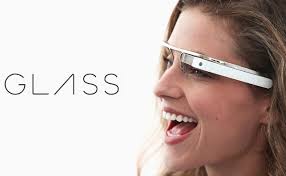 July 2013 – Google opened up an information page for Google Glass, a computer mounted on frames for glasses. The product itself was made available shortly after to a select group of testers called “Explorers”. Google is currently considering partnerships with eyewear brands in order to fit its Google Glass frames with lenses. Development for Google Glass took place at Google X, a lab where Google researchers work in secret on numerous projects including the driverless car.
July 2013 – Google opened up an information page for Google Glass, a computer mounted on frames for glasses. The product itself was made available shortly after to a select group of testers called “Explorers”. Google is currently considering partnerships with eyewear brands in order to fit its Google Glass frames with lenses. Development for Google Glass took place at Google X, a lab where Google researchers work in secret on numerous projects including the driverless car.
October 2013 – Google acquired Flutter, a gesture recognition company, for around $40 million. Their first product “Flutter App” gave users the opportunity to control different applications such as Spotify or QuickTime through hand gestures. Unlike Kinect for example, which requires users to have extra hardware to enable gesture recognition, Flutter App uses the already existing camera of the mobile device it is installed on. It remains to be seen what Google plans to do with the technology.
